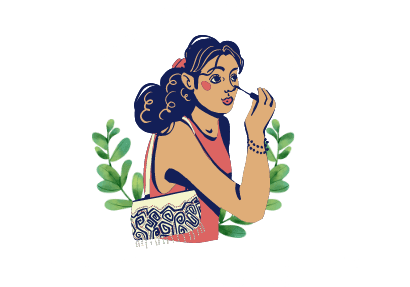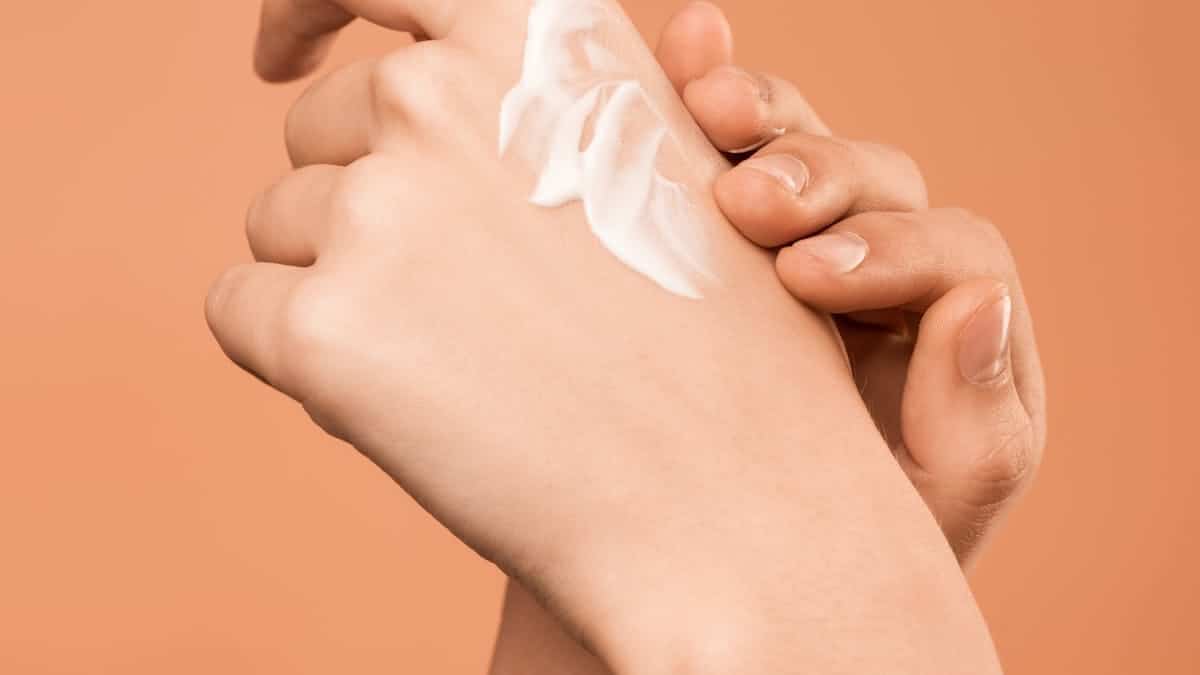Here is your complete guide to does shea butter clog pores.
Introduction to Does Shea Butter Clog Pores
Shea butter is a popular ingredient in skincare and haircare, known for its moisturizing properties and rich nutrient profile. However, a common question arises among beauty enthusiasts: does shea butter clog pores? This inquiry is particularly significant for individuals with acne-prone skin or those who are cautious about their skincare choices. Understanding whether shea butter can contribute to clogged pores is essential for selecting the right products for your skin type.
In this article, we will explore the relationship between shea butter and pore clogging, shedding light on its composition, the science of comedogenicity, and how it interacts with different skin types. By the end, you will have a clearer understanding of whether shea butter clogs pores and how to incorporate it into your skincare routine safely.
Understanding Shea Butter
What is Shea Butter?
Shea butter is a natural fat extracted from the nuts of the African shea tree (Vitellaria paradoxa). It has been used for centuries in various cultures for its moisturizing and healing properties. The extraction process typically involves:
- Harvesting: Shea nuts are collected from the shea tree.
- Drying: The nuts are sun-dried to reduce moisture content.
- Cracking: Dried nuts are cracked open to extract the kernels.
- Roasting: The kernels are roasted to enhance flavor and facilitate oil extraction.
- Grinding: Roasted kernels are ground into a paste.
- Heating: The paste is heated to separate the oil from solids.
- Cooling: The oil solidifies into what we know as shea butter.
Composition of Shea Butter
Shea butter is rich in fatty acids and vitamins, making it an excellent moisturizer. Its composition includes:
- Fatty Acids: Predominantly oleic acid (about 55%), stearic acid (20%), and palmitic acid (8%).
- Vitamins: High in vitamins A, E, and F, which promote skin health.
- Antioxidants: Protects skin from free radicals.
| Component | Percentage in Shea Butter |
|---|---|
| Oleic Acid | 55% |
| Stearic Acid | 20% |
| Palmitic Acid | 8% |
| Linoleic Acid | 3% |
| Other Fatty Acids | 14% |
The Science Behind Pore Clogging: Does Shea Butter Clog Pores?
What Does Comedogenic Mean?
The term comedogenic refers to substances that can cause the formation of comedones—clogged hair follicles that can lead to acne. A product’s comedogenicity depends on several factors:
- Ingredient Composition: Some oils and butters are more likely to clog pores than others.
- Skin Type: Oily skin may react differently compared to dry or combination skin.
- Environmental Factors: Humidity, pollution, and skincare routines can influence pore health.
Factors Influencing Pore Clogging
Understanding how various factors affect pore clogging can help you make informed choices:
- Skin Type Variations:
- Oily skin may be more prone to clogged pores due to excess sebum production.
- Dry skin may benefit from heavier oils like shea butter but should monitor for breakouts.
- Environmental Factors:
- High humidity can increase sweat and oil production, potentially leading to clogged pores.
- Pollution can exacerbate skin issues by introducing irritants that clog pores.
Does Shea Butter Clog Pores?
Research Findings
Numerous studies have examined the comedogenic potential of shea butter. While some sources classify it as moderately comedogenic (rating of 3 on a scale of 0 to 5), individual reactions can vary significantly. Here’s a summary of findings:
- Some users report no issues with shea butter on their skin.
- Others with oily or acne-prone skin may experience breakouts after using it.
Key Fatty Acids in Shea Butter: Does Shea Butter Clog Pores?
The fatty acid composition plays a crucial role in determining whether shea butter clogs pores. Here’s a closer look at key fatty acids:
| Fatty Acid | Percentage in Shea Butter | Comedogenic Rating | Effect on Skin |
|---|---|---|---|
| Oleic Acid | 55% | High | Can clog pores |
| Stearic Acid | 20% | Moderate | May contribute to blockage |
| Palmitic Acid | 8% | Moderate | Similar effects as oleic |
Oleic Acid
Oleic acid is known for its moisturizing properties but has a higher likelihood of clogging pores. It penetrates deeply into the skin but may not be suitable for oily or acne-prone individuals.
Stearic Acid
Stearic acid provides emollient properties and helps stabilize formulations. Its moderate comedogenic rating means it may not cause issues for everyone.
Palmitic Acid
Palmitic acid is similar in behavior to oleic acid but is less likely to cause breakouts. However, individuals with sensitive skin should still exercise caution.
Individual Reactions to Shea Butter: Does Shea Butter Clog Pores?
Individual reactions to shea butter vary widely based on personal skin type and condition. Here are some anecdotal observations:
- Positive Experiences:
- Users with dry or combination skin often find shea butter beneficial for hydration without adverse effects.
- Negative Experiences:
- Those with oily or acne-prone skin may report increased breakouts after applying shea butter, indicating that shea butter clogs pores for them.
Alternatives to Shea Butter: Does Shea Butter Clog Pores?
If you find that shea butter clogs pores on your skin, there are several non-comedogenic alternatives worth considering:
Non-Comedogenic Oils and Butters
Here’s a list of some popular alternatives that are less likely to clog pores:
| Alternative Oil/Butter | Comedogenic Rating |
|---|---|
| Jojoba Oil | 2 |
| Argan Oil | 0 |
| Hemp Seed Oil | 0 |
| Sunflower Oil | 0 |
| Grapeseed Oil | 1 |
How to Choose the Right Moisturizer: Does Shea Butter Clog Pores?
When selecting a moisturizer, consider these tips:
- Know Your Skin Type:
- Oily Skin: Look for lightweight, gel-based formulas.
- Dry Skin: Creamier products with hydrating ingredients are ideal.
- Read Ingredient Labels:
- Avoid heavy oils if you have acne-prone skin; opt for lighter alternatives instead.
- Patch Test New Products:
- Always conduct a patch test before fully incorporating a new product into your routine.
Common Mistakes to Avoid When Using Shea Butter: Does Shea Butter Clog Pores?
Misunderstanding Comedogenicity
One of the most common mistakes people make is misunderstanding the concept of comedogenicity. While shea butter is often labeled as non-comedogenic, this classification can be misleading. Here are some key points to consider:
- Individual Skin Type: The comedogenicity of shea butter can vary significantly based on individual skin types. What works for one person may not work for another.
- Product Formulation: Finished products containing shea butter may have different effects compared to pure shea butter. Other ingredients in the formulation can influence how comedogenic a product is.
Overusing Shea Butter
Another mistake is using too much shea butter, especially for those with oily or acne-prone skin. Here are some tips to avoid overuse:
- Start Small: Begin with a small amount to see how your skin reacts before applying more.
- Monitor Your Skin: Pay attention to any changes in your skin condition, such as increased breakouts or oiliness.
Ignoring Skin Sensitivity
Many users overlook their skin’s sensitivity when introducing new products like shea butter. Consider the following:
- Patch Test: Always conduct a patch test before applying shea butter to larger areas of your face or body.
- Watch for Reactions: If you notice redness, irritation, or breakouts, discontinue use immediately.
Assuming All Shea Butter is the Same
Not all shea butter products are created equal. Here’s what to keep in mind:
- Refined vs. Unrefined: Unrefined shea butter retains more nutrients but may be more comedogenic due to its thicker consistency. Refined shea butter may be less likely to clog pores but lacks some beneficial properties.
- Quality Matters: Always choose high-quality shea butter from reputable sources to ensure you’re getting the best product for your skin.
Neglecting Other Skincare Practices
Using shea butter alone won’t guarantee clear skin. It’s essential to maintain a comprehensive skincare routine:
- Cleansing: Ensure you are cleansing your skin properly to remove excess oils and impurities.
- Exfoliating: Regular exfoliation helps prevent dead skin cell buildup, which can contribute to clogged pores.
- Hydration: Keep your skin hydrated with water and other non-comedogenic moisturizers.
By avoiding these common mistakes, you can better determine whether shea butter clogs pores for you and make informed decisions about its use in your skincare routine.
Read Also: Collagen Hair Care.
FAQs about Does Shea Butter Clog Pores
Can everyone use shea butter without issues?
Not everyone can use shea butter without experiencing breakouts. Individuals with oily or acne-prone skin should approach it cautiously.
Read Also: Is Shea Butter Good for Tattoos?
What are the signs of clogged pores?
Signs include blackheads, whiteheads, enlarged pores, and acne breakouts. If you notice these after using shea butter, it may be contributing to pore clogging.
Read Also: Shea Butter Versus Coconut Oil.
Is refined shea butter better than unrefined?
Refined shea butter has fewer nutrients and may be less comedogenic than unrefined versions. However, unrefined shea butter retains more beneficial properties.
Read Also: Lipstick and Glitter.
How can I test if a product clogs my pores?
To test if a product clogs your pores:
- Apply it on a small area of your skin (preferably where you usually experience breakouts).
- Monitor for any adverse reactions over several days.
Conclusion
In conclusion, whether shea butter clogs pores depends largely on individual skin types and conditions. While many people enjoy its moisturizing benefits without issues, others—particularly those with oily or acne-prone skin—may find that it leads to breakouts. Understanding its composition and how it interacts with your unique skin type is essential for making informed skincare choices.
Read Also: Yellow vs White Shea Butter.
If you’re unsure about using shea butter, consider trying non-comedogenic alternatives that suit your needs better. Ultimately, your skincare routine should enhance your natural beauty while maintaining healthy skin!
Read Also: Braiding Hair Colour Charts.

